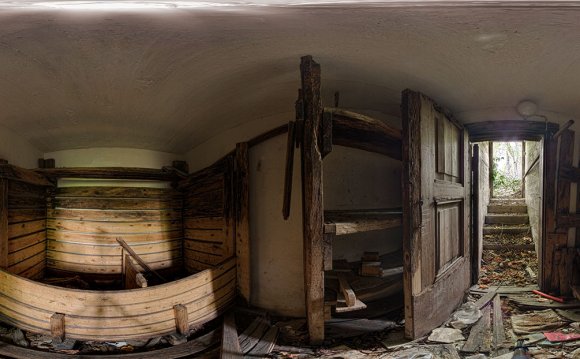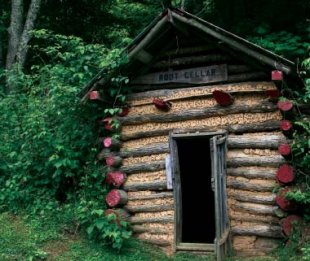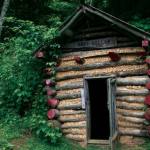
 By: Rachel Machacek
By: Rachel Machacek
There’s an unfinished desolate corner in many a basement. It’s cold, a little humid, and empty, save for a few broken wooden crates and a couple dirty towels from who knows where scattered across the floor. Nobody goes in that corner—not even the kids playing hide and seek. It’s dead space. (Though I’m sure ghosts wouldn’t hang out there, either.)
I hate dead space. We should avoid it at all costs. This unfinished area is a tough one, though, because not even tumbleweed could survive here. My solution: Build a root cellar or a cool pantry.
Traditionally, these were underground storage spaces that used the cooling and insulating properties of the earth to preserve produce. Instead of drilling into the ground though, you can sketch one right into your floorplan, similar to the way some people put a wine cellar in their design. (This is where that bleak, desolate corner comes in.) The difference between a root cellar and cool pantry is humidity. The former needs to be more humid in order to keep produce fresh (apples, tomatoes, potatoes, squash, lettuce), while the latter is a dryer environment perfect for storing nuts, grains, canned goods—and just about anything else.
Here are a few guidelines to create the right environment for keeping a bounty of food on hand:
1. Location
Because a root cellar uses the earth’s cooler temperature to preserve goods, “the best location is as deep in the ground as is practical, and away from any daylight features, ” says Kelly Hart of greenhomebuilding.com. Shoot for a shady, north-facing corner of the basement with the highest soil height on the exterior. This setup is ideal because it benefits from maximum exposure to partially underground exterior walls, meaning better insulation. (You also won’t need as many interior walls, which saves on materials, money and labor.)
2. Size
Ask yourself, “Why am I building this root cellar?” It’s not a philosophical question—think about what you’re planning to store in there and, of course, how much space in your basement to devote to it. An 8-by-8-foot room has plenty of storage for the average family, though Kelly suggests it should be no bigger than necessary. If your storage list has varying climate requirements, consider building two chambers into your root cellar. Make the “foyer” the warmer, drier climate that leads into a cooler room with higher humidity.
 3. Materials
3. Materials
You want to use materials that can withstand a moist environment. Pressure-treated wood resists cracking and warping, and is a sturdy option for walls and shelving. (This is important—a compromised shelf that gives under the weight of jars and canned fruit doesn’t do you any good.) Beware: Waterproofing materials in treated wood can potentially “offgas” into your food. Incorporating bricks or concrete blocks in lieu of lumber wherever possible will help keep your produce from smelling like plywood. Since basement floors can be damp, use a composite decking material for the bottom wall plate that connects to the floor. (Kelly says a concrete floor works just fine.)
4. Insulation
Climate control is the main challenge with a root cellar or cool pantry, so proper insulation will be your best friend. Obviously, you don’t want to insulate the foundation wall (on the inside or outside). “This interferes with the natural coolness of the earth, ” Kelly explains. Focus on the interior partition walls and the ceiling, both of which will most likely belly up to heated spaces in your home. Kelly recommends cotton, wool, cellulose or fiberglass as insulators. (Opt for products with low chemical emissions, of course.)
5. Ventilation
Even though insulation is key, you still want to keep air circulating up and out. This helps rid the room of gases that certain cantankerous fruits and vegetables give off, which can promote either sprouting or spoilage in nearby crops. (Put a bushel of apples next to your spuds, and watch those potatoes sprout.) To regulate airflow, there should be two vents: an inlet pipe near the floor to let in cold air, which pushes warm air up and out the exhaust pipe at the top of the room. Throw in an exhaust fan to supplement airflow, and cover pipe ends with screening to prevent pests from invading your stores.









